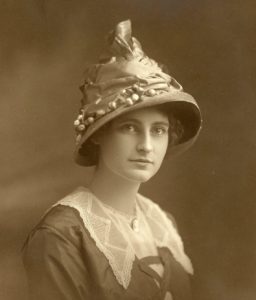
by Cynthia Thompson
Shock, denial, the closing of schools, churches, theaters, beaches and all gathering places, mandatory masks, emergency hospitals, mounting cases and deaths………COVID 19 of 2020?….No, Ventura and the Spanish Flu pandemic in 1918.
This isn’t the first time our nation has faced a worldwide pandemic. COVID 19 and the 1918 Spanish Flu are drawing comparisons. History reveals just how similarly the world of the past and present have responded.
It is a story of hope…..we survived and thrived. Just recall that the Spanish Flu preceded the unprecedented prosperity of the Roaring 1920s.
October, 1918….a large carnival came to town. Immediately afterwards, towns people became severely ill. At first there was denial, even among prominent doctors. However, when the numbers of sick and dying multiplied at lightening speed, the townspeople of Ventura heard the call to arms.
Edith Hobson Hoffman formed the Red Cross Committee (Edith became very prominent as a 20th Century philanthropist and community activist). On October 20th of 1918 the Ventura Daily Post announced that the Santa Barbara Mission would close for the first time since its 1786 founding.
Overnight, the real battle began; schools, churches, poolrooms, card rooms, saloons, theaters, and all gathering places were mandated to close. Because of the shortage of nurses, families cared for their own in isolation. Families were going hungry, so Mrs. Charles Bartlett organized “Meals on Wheels” for home delivery. (Mrs. Charles Bartlett became a major women’s club leader and community activist, including the raising of the cross in 1912)
The Red Cross Committee decided an emergency hospital was needed. Bard Hospital and a school were considered, but the contagion was too dangerous. Finally, two churches; the First Methodist Church at Meta (Thompson Blvd. today) and Oak, and the octagonal First Christian Church at Fir and Santa Clara Streets (later moved to Main and Kalorama). Their size, additional classrooms and in-house kitchen made them the perfect facilities. On October 31st, the first patients arrived.
The newspapers appealed to housewives to donate soft cloths for wash rags and towels, women volunteered as practical nurses to care for the sick and clean the hospitals, others shared shifts as office workers, answering telephones and keeping records. Mary Philbrick volunteered to do all cooking for patients and nurses (Mrs. Philbreck would become a major philanthropist of hospital systems in both Ventura and Oxnard in the 1940s -1960s).
The supply of masks was running dangerously low and the citizens were asked to make their own.
Masking, volunteerism, and isolation stemmed the tide (or flattened the curve) and cases and deaths diminished. By December 22nd, the last patient left the emergency hospital, the mask ordinance was lifted, and children returned to school.
Thus, ended a dramatic war experience in the town of Ventura, which numbered 3,800 (today, approximately 120,000) at the time. Through suffering and sharing the citizens were brought closer together as they fought the enemy called the “Flu”, an invisible enemy that made a battleground of the town and took 29 lives.
When the flu surfaced again across the nation in 1922, Neill Baker, as board of health member, announced this resolution and lawful demand:
“Carried unanimously that all indoor public gatherings, viz, schools, theaters, churches, lodges, clubs, dance halls, pool halls, be closed indefinitely and that the city health officer be instructed to enforce said order”
This time Ventura was prepared.
The people mentioned in this article by name were in their early 20s in 1918. By mid 20th Century they had become community leaders and activist, pillars of Ventura society. Most of them are pictured on the Historic Tile Mural (150 years of Ventura history) in front of the Mission (by Michael Kelly). Our profiles in courage.
